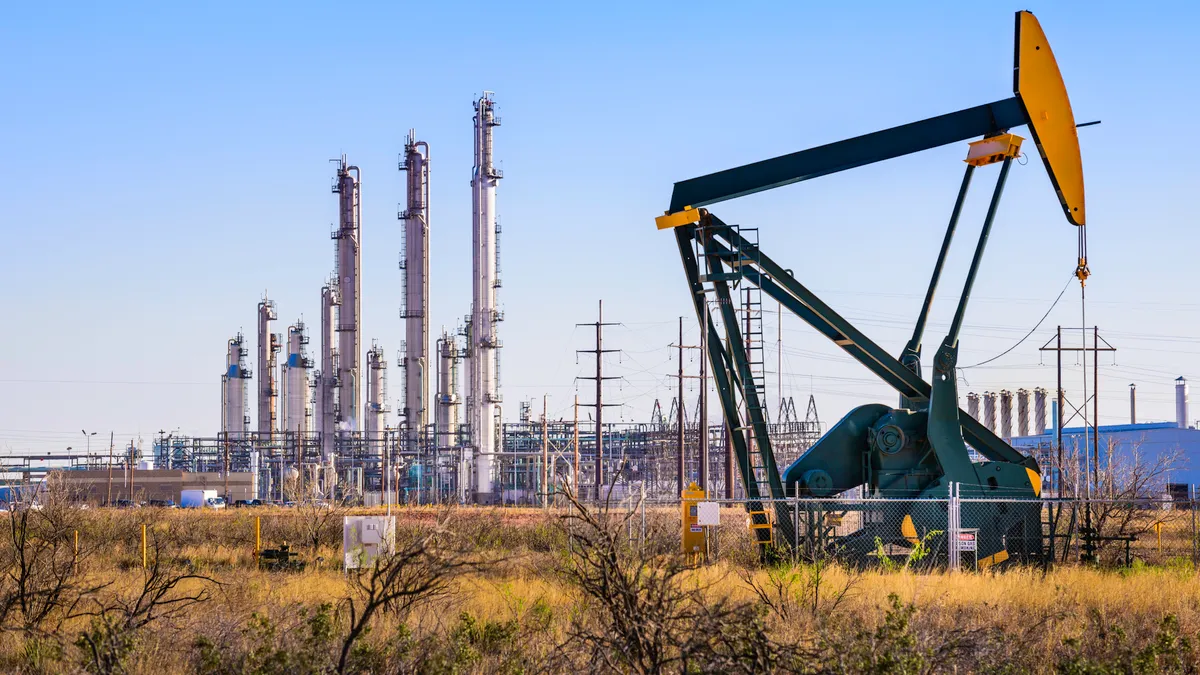Dive Brief:
- Oklo and Diamondback Energy have agreed to explore a long-term power purchase agreement that would supply the Texas-based oil and gas producer’s Permian Basin operations with power from Oklo’s 50 MWe fast fission reactors, Oklo announced Monday.
- The companies’ agreement spans an initial 20-year term with the option to renew for another 20 years, in line with Oklo Powerhouse reactors’ 40-year design life, the announcement said.
- Oklo designs, builds, owns and operates its reactors in a “model [that] works well with a range of operators like Diamondback because it simplifies buying reliable, clean power … through power purchase agreements,” Oklo Director of Communications and Media Bonita Chester told Utility Dive in an email.
Dive Insight:
Oklo’s announcement comes amid a surge in interest from energy-intensive industries in advanced nuclear and other 24/7 low-carbon energy sources.
Projected load growth from hyperscale data centers, along with industry-led efforts to decarbonize metallurgical processes like steelmaking, led Microsoft, Google and Nucor to jointly announce a clean energy RFI last month.
With high energy densities and the potential to generate substantial process heat, advanced nuclear is also seen as a promising colocation partner for industrial users that require both heat and electricity. Dow and X-energy are collaborating on a four-reactor, 320-MWe project that would directly supply Dow’s UCC Seadrift Operations petrochemical plant with electricity and process heat.
“We continue to see growing interest for nuclear energy from a variety of sectors” with companies demanding “power that is not only clean, but is also reliable,” Nuclear Energy Institute Senior Director of Markets and Policy Benton Arnett said in an email.
Small modular reactors, including non-light-water technologies like Oklo’s, are of particular interest to oil and gas extractors in remote areas like the Permian Basin and northern Alberta's oil sands region, said David Brown, director of Wood Mackenzie’s energy transition practice, in a March interview.
While progress toward transportation electrification and other lower-carbon technologies may reduce oil and gas demand in the long run, Wood Mackenzie doesn’t expect demand for oil and gas liquids to peak until about 2050, Brown said. This long runway could quell concerns about stranding nuclear power assets designed to operate for decades, he added.
Oklo is not putting all its chips on oil and gas industry partnerships, Chester stressed. In addition to Diamondback Energy, the company is “engaged in active dialogues with a range of potential customers including data centers, defense agencies, factories, industrial facilities, rural/off-grid communities and utilities,” she said.
Oklo’s 15- and 50-MWe reactors are designed for flexibility, Chester said. Though the Diamondback announcement doesn’t specify a specific number of reactors or generation capacity under the companies’ agreement, Chester noted that “our [reactor] sizes … allow us to scale with our customer needs, grow with them as they scale their operations in phases and expand to larger scale as their energy requirements increase.”
Despite the NRC’s denial of its initial combined operating license application in 2022 and the Air Force’s decision to reopen bidding on a $100 million power contract initially awarded to Oklo, the company still expects to deploy its first commercial reactor in Idaho by 2027, Chester said. Oklo already has a site use permit at Idaho National Laboratory and a fuel allocation from the DOE and INL, according to its website.
Correction: A previous version of this story misnamed the agency that has allocated fuel to Oklo. It is the Department of Energy along with the Idaho National Laboratory.













